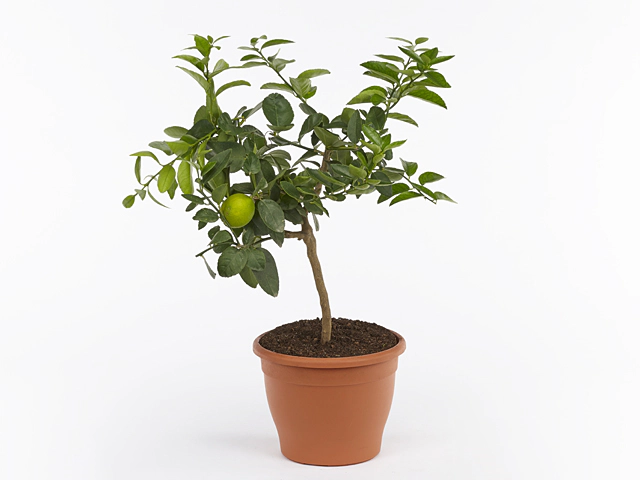Citrus aurantiifolia

| Leaf arrangement | spreaded |
| Leaf tip | Blunt/obtuse |
| Fruit shape | Rounded/globose |
| Leaf margin | Erose |
| Winter hardness | Not hardy (USDA-zone 9,10,11) |
| Fruit color | Green |
| Leaf, general shape | Elliptic / oval |
| Leaf, scent | Unscented |
| Structure (tissues) | Woody |
| Leaf width | 5 - 7,5 cm |
| Leaf surface | Smooth; Dull |
| Fruit size | 6 - 7 cm |
| Leaf duration | Evergreen |
| Leaf size | 7,5 - 10 cm |
| Plant, growth type | Erect |
| Leaf, main color | Dark green |
| Leaf colour, pattern | Unicolored |
Citrus aurantiifolia, commonly known as lime, is a versatile fruit tree that belongs to the citrus family. Limes are known for their distinctive sour taste and are used in a variety of culinary applications, from beverages and desserts to marinades and sauces. In this article, we will explore the characteristics and growth habits of the lime tree.
One of the key features of the lime tree is its leaf arrangement, which is spreaded, meaning the leaves are evenly distributed along the branches. The leaf tips are blunt or obtuse, providing a rounded appearance to the foliage. The leaves themselves are elliptic or oval in shape, with a width ranging from 5 to 7.5 cm. They are dark green in color, giving the tree a lush and vibrant look.
The leaf margins of the lime tree are erose, meaning they have a jagged or slightly irregular edge. This adds to the overall aesthetic appeal of the tree. The leaf surface is smooth and dull, devoid of any shine or glossiness. Despite its lack of scent, the lime tree compensates with its flavorful and aromatic fruits.
Speaking of fruits, limes have a rounded or globose shape, with a diameter of about 6 to 7 cm. The fruit color is green, which intensifies as it ripens. Limes are harvested throughout the year but are more abundant during the warmer months. They are a rich source of vitamin C and are widely recognized for their acidic and tangy taste.
In terms of growth habits, the lime tree is erect, meaning it grows in an upright manner. It typically reaches a height of around 5 to 6 meters, making it suitable for both home gardens and commercial orchards. The tree's structure is woody, providing a sturdy foundation for the branches and fruits.
The lime tree is evergreen, meaning it retains its foliage year-round. This adds to its ornamental value, as the vibrant green leaves provide a refreshing sight, even during the winter months. With a leaf size ranging from 7.5 to 10 cm, the lime tree showcases its fullness and vitality.
While the lime tree thrives in warm climates, it is not considered hardy in colder regions. It is typically grown in USDA Hardiness Zones 9, 10, and 11, where the temperatures remain mild throughout the year. Gardeners in these zones can enjoy the beauty and benefits of this tropical tree without having to worry about frost damage.
In conclusion, the lime tree, scientifically known as Citrus aurantiifolia, is a visually appealing and versatile fruit tree. Its spreaded leaf arrangement, rounded fruits, and erose leaf margins make it an attractive addition to any garden or orchard. With its evergreen nature and erect growth habit, this tree provides a continuous source of fresh and zesty limes. Whether used in culinary creations or enjoyed as a refreshing beverage, limes add a tangy and invigorating element to our lives.
Market availability index by month:
| Jan. | Feb. | Mar. | Apr. | May | Jun. | Jul. | Aug. | Sep. | Oct. | Nov. | Dec. |
|---|---|---|---|---|---|---|---|---|---|---|---|
| 3 | 3 | 3 | 3 | 4 | 3 | 2 | 3 | 3 | 2 | 2 | 2 |